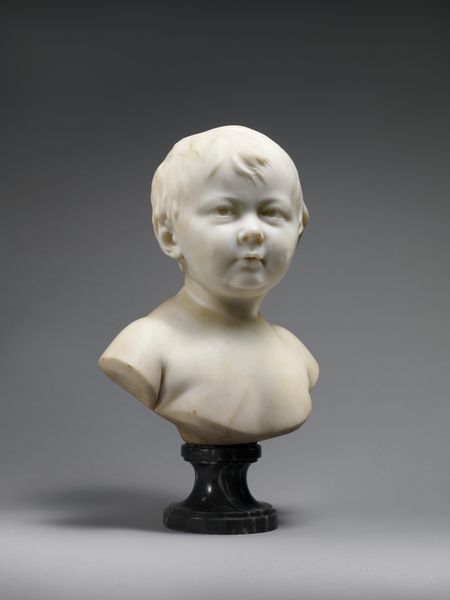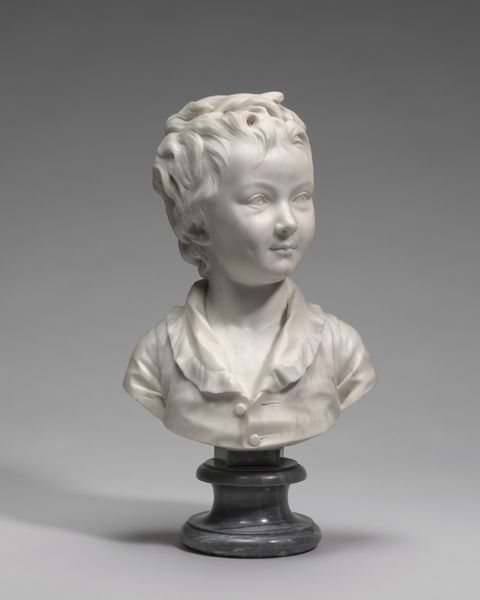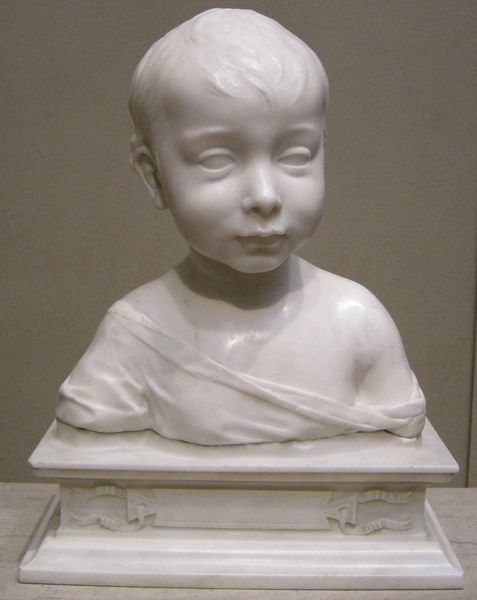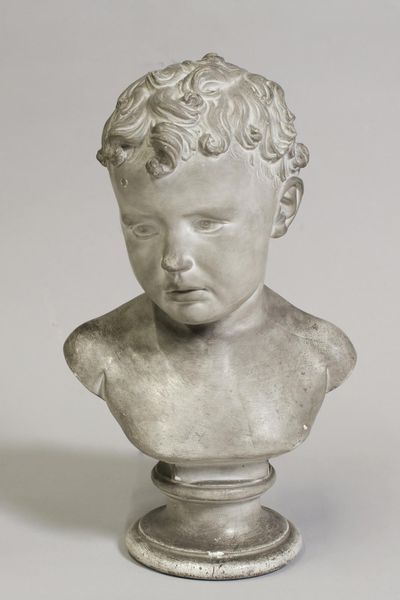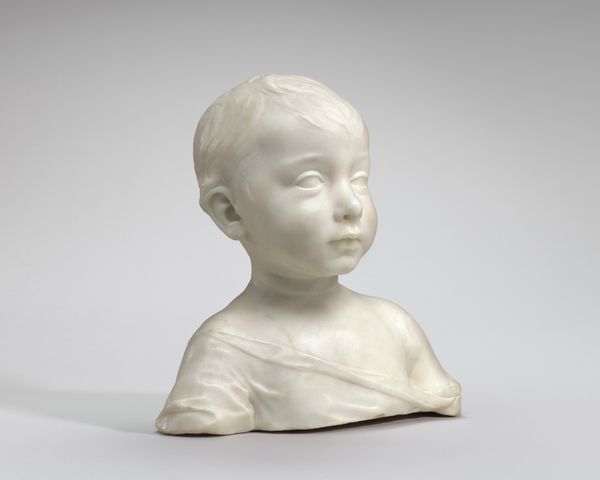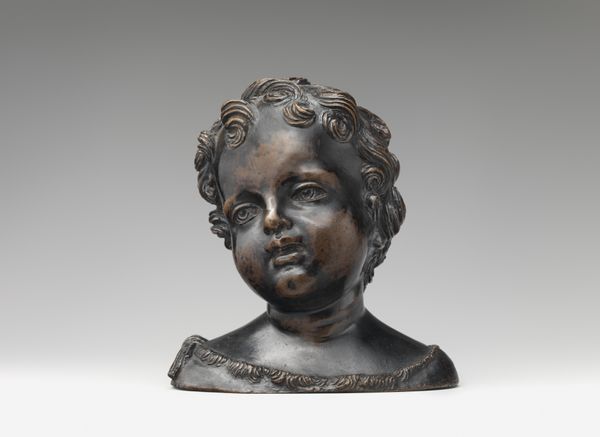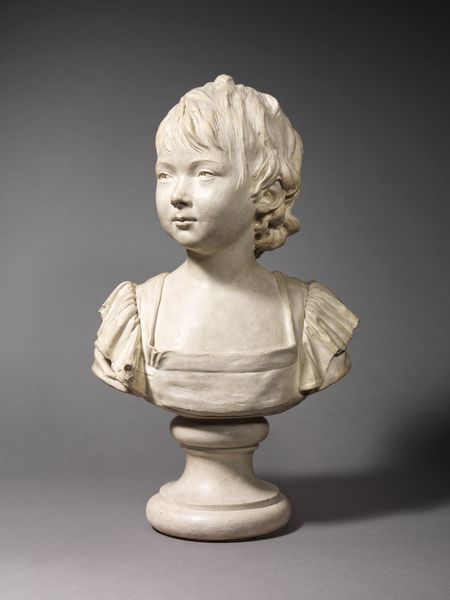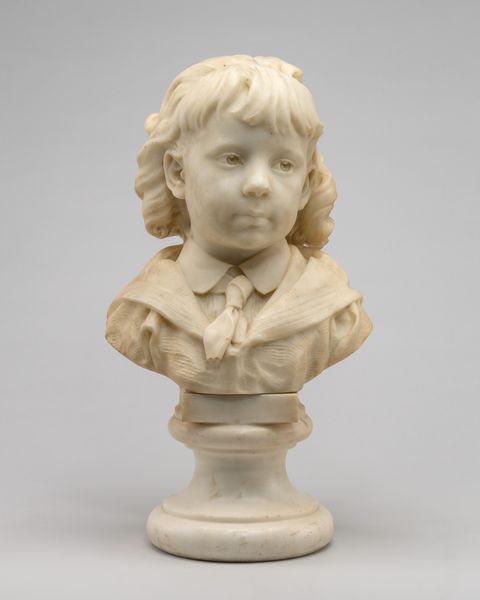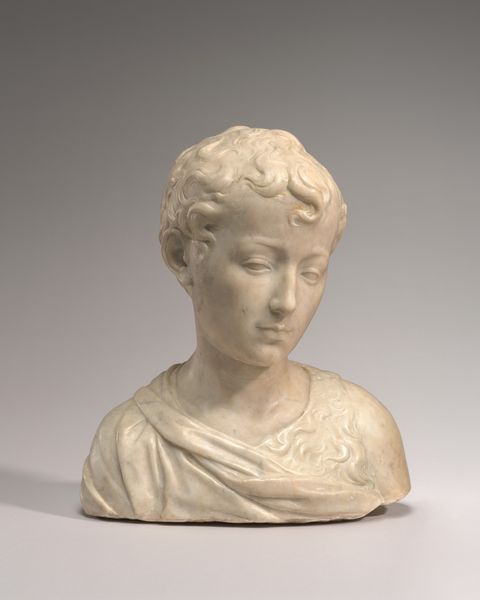
sculpture, marble
#
portrait
#
figuration
#
portrait reference
#
classicism
#
sculpture
#
marble
#
italian-renaissance
#
early-renaissance
Dimensions: overall: 30.5 x 26.5 x 16.3 cm (12 x 10 7/16 x 6 7/16 in.)
Copyright: National Gallery of Art: CC0 1.0
Editor: This striking marble bust, "The Christ Child(?)," was created around 1460 by Desiderio da Settignano. Its small scale gives it a delicate and intimate feel, though there’s something quite somber in the downcast gaze. What strikes you most about this piece? Curator: The somber mood you noted resonates with a specific visual language prevalent during the Early Renaissance. Look closely at the figure’s slightly drooping eyes and gentle mouth; the artist uses these subtle cues to evoke contemplation and perhaps even a premonition of the child's future suffering. Do you see how these details relate to earlier depictions? Editor: I hadn't really made that connection. Is the artist deliberately using established symbols? Curator: Exactly! While rendered with a new naturalism – observe the curls and soft flesh – the artist builds on layers of visual association. Representations of children, especially Christ, carried tremendous cultural weight. Consider the inherent psychological impact: a young, vulnerable figure imbued with destiny. It prompts reflection on innocence, sacrifice, and divine will. Editor: So, even without overt symbols like a halo, the artist is using established ways of portraying these concepts. I guess that explains its powerful effect! Curator: Precisely. The continuity of these symbolic languages is incredibly powerful, echoing through generations. It is less about overt display, and more about invoking collective memories. Editor: That’s a fascinating way to understand the sculpture, seeing it as a layering of past representations and cultural meaning! Curator: It reminds us that images speak volumes, connecting us to enduring themes and beliefs.
Comments
No comments
Be the first to comment and join the conversation on the ultimate creative platform.
